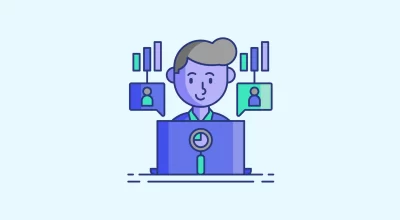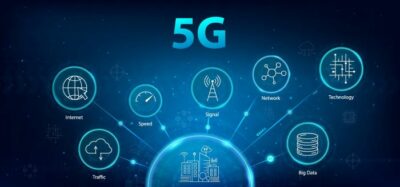Thanks to the actionable insights and results, businesses today have widely adopted Data Science and Data Analytics, Python Courses have become commonplace. Big data has become a major component in every sector of the world. The creation of such large datasets, however, requires understanding and having the right tools on hand to parse through them and discover the right information. The fields of data science and analytics, which were largely relegated to academia, have now become integral components of Business Intelligence and big data analytics. One may pursue a data science course or data analytics course to dive deep into the differences.
However, it can be difficult for a layman to distinguish between data analytics and data science. Even though they are interconnected, they provide different results and pursue different approaches. One can enroll in a python course to master the field of data science.
But in order to understand the data your business produces, one has to understand what each one brings to the table, and how each is unique. Using both methods is a great way to gain insight into their strengths and weaknesses and locate the value they can provide when analyzed in relation to one another.
There are different ways in which organizations use data science and data analytics to inform their decisions and increase efficiency and profitability. Here is the basic difference between the two terms in data science:
Data Science
Programmers, mathematicians, and statisticians use data to gain insights and drive organizational strategy. Data scientists are the experts at machine learning, data modeling, and automating processes with algorithms. As meaningful data is field-specific, data scientists also have domain expertise as well as the ability to understand their industry or company. Data science research in healthcare, for example, can help diagnose diseases, prevent them, or teach computers to read X-rays and MRIs.
The role of data scientists is to identify trends, spot issues, understand consumer behavior, and propose solutions that support strategic decision-making for sales, marketing, product development, information technology, finance, and business leaders.
A company’s data scientists lay the foundation for all of its analyses. This is accomplished by performing key functions, such as:
Data wrangling
Cleansing and organizing data in order to make it more useful.
Statistical modeling
The process of analyzing data using different models such as regression, classification, and clustering models-in order to identify relationships between variables.
Programming
It refers to the process of creating algorithms, software, and programs in a variety of programming languages that can be used to analyze large datasets more efficiently than manually. Examples include R, Python, and SQL.
Data Analytics
Data analytics professionals collect, organize, and maintain data, as well as use statistics, programming, and other techniques to gain insights from it. Data analysts are responsible for spotting trends and solving problems. It is most useful in the manufacturing and retail sectors. Tracking orders, making recommendations, and identifying store locations are just a few examples of data analytics in retail.
Rather than driving decision-making, data analysts tend to respond to requests from decision-makers.
Since their job is to answer questions and extract insights, the tools, & techniques, they use depend on the kind of analysis being conducted.
The four major types of analytics include:
Descriptive analytics
Analyzing data is used to examine, understand, and describe something that has already taken place.
Diagnostic analytics
Understanding why something happened, this analytics goes deeper than descriptive analytics.
Predictive analytics
To answer questions about what will happen in the future, this analytics uses historical data, past trends, and assumptions.
Prescriptive analytics
The goal of this analytics is to identify specific actions that an individual or organization should take in order to achieve future targets.
Business analytics refers to the application of data analytics tools and methodologies in basic business settings. Business analytics is about extracting meaningful insights from data that an organization can use to inform its strategy and, ultimately, achieve its goals.
Data science and data analytics: understand the key differences
There is a major difference between data science and data analytics in terms of “scope”. Despite working with the same data sets, a data scientist’s role is much broader than that of a data analyst. Thus, data scientists often begin their careers as analysts.
These two roles differ in several ways. Roles and responsibilities
A data scientist models data to identify opportunities, make predictions, and support strategies. Data helps them predict the future. Data analysts are responsible for solving problems with a snapshot of the situation that is currently available.
Defining the roles of a Data Scientist and a Data Analyst in the field of Data Science
Using data in a different way is the role of a Data Scientist and a Data Analyst. As discussed previously, Data Scientist uses a combination of mathematical, statistical, and machine learning methods to clean, process, and interpret data. Using prototypes, machine learning algorithms, predictive models, and custom analysis, they create advanced data modeling processes.
A data analyst examines data sets in order to identify trends and draw conclusions, whereas a data analyst collects large volumes of data, organizes it, and analyzes it to identify relevant patterns. Their findings are presented using data visualization methods like charts, graphs, etc. after the analysis phase is complete. An analyst’s job is to translate complex insights into business-savvy language that both technical and non-technical members of an organization can understand.
Both roles collect, clean, and analyze data to gain actionable insights for data-driven decisions. That is why they may often overlap between the responsibilities of Data Scientists and Data Analysts.
The duties and responsibilities of data scientists
- Data processing, cleaning, and validation.
- Performing exploratory data analysis on large datasets.
- Creating ETL pipelines for data mining.
- Utilizing ML algorithms like logistic regression, KNN, Random Forest, Decision Trees, etc., to perform statistical analysis.
- Writing code for automation and building ML libraries that are resourceful.
- Using machine learning tools and algorithms to gain business insights.
- Making business predictions by identifying new trends in data.
The duties and responsibilities of Data Analysts
- Collecting and interpreting data.
- Analyzing a dataset for relevant patterns.
- Querying data using SQL
- Analyzing data using predictive, prescriptive, descriptive, and diagnostic analytics.
- Using data visualization tools like Tableau, IBM Cognos Analytics, etc., to present extracted data.
- Management and manipulation of databases
Algorithms and machine learning are used by data scientists to improve how data supports business goals. The data analyst collects, stores, and maintains data and analyzes it.










Comments on " What is the difference between Data Science and Data Analytics?" :